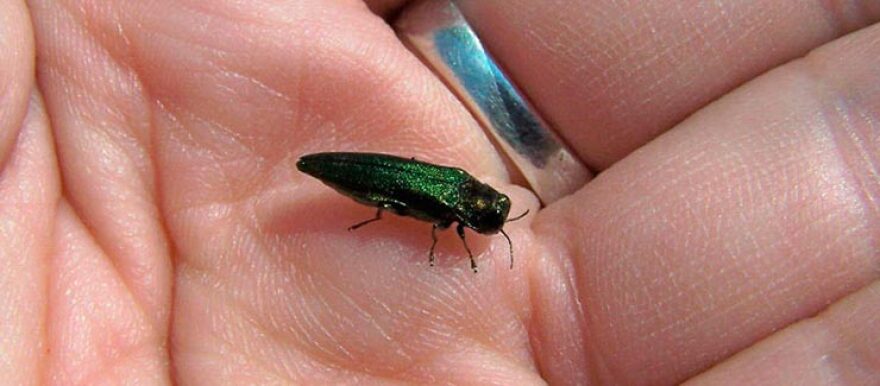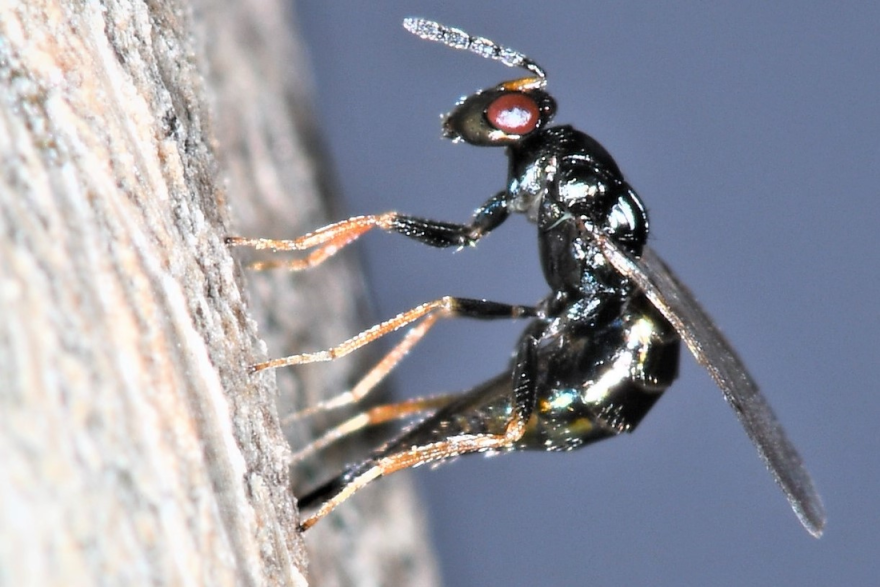Ash trees were once abundant in Michigan, now hundreds of millions of them are dead. They were killed by the emerald ash borer, an invasive beetle native to Eastern Asia.
In a forest overlooking Lake Charlevoix, Derek Shiels hopes to find ash trees. He is the director of stewardship at the Little Traverse Land Conservancy and he says that ash trees are one of the easiest trees to spot.
“Because they’re all dead," Shiels said laughing.
He starts walking on the trail and almost immediately he finds what he’s looking for.

“Here’s one of the standing dead ash trees right here in front of us,” said Shiels. “As we come over the ridge here you can start to see—just a scattered—almost a graveyard of ash trees.”

This is the story of ash that many Michiganders are familiar with. The emerald ash borer is a tiny, metallic-green beetle. Its larvae bore into the inner bark and stop the flow of nutrients from the leaves to the roots.

The ash borer invaded Michigan in 2002. Within a matter of years, it spread throughout the rest of the country from the Atlantic to the Rockies. It killed so many trees so quickly, it looked like ash would be eradicated completely.
“There’s a dead tree every 10 - 15 feet here,” said Shiels

But there is another part to this story. In 2007 a branch of the United States Department of Agriculture introduced tiny parasitic wasps in Michigan. They specialize in attacking the ash borer.
The first one is called Tetrastichus planipennisi. The female lays a clutch of eggs inside emerald ash borer larvae. The wasp larvae hatch and eat their way out.
The population of Tetrastichus picked up and started playing a significant role about five years after their release in Michigan. They spread very quickly and are now killing emerald ash borer all over the state and country.
Jian Duan is a research entomologist who spent the past 12 years studying emerald ash borer for the USDA. He says these wasps are responsible for cutting the ash borer’s growth rate by about 40 percent.
There are five species of parasitic wasps in Michigan, including a native one. Oobius agrili is another introduced wasp impacting the beetle in Michigan.
This wasp lays its eggs inside the eggs of the emerald ash borer. Within a week, the infested eggs change from looking like plump golden raisins to shriveled black currants and die. These wasps kill the invasive beetle before it does any damage to the tree at all. Just like the other wasp, this one is very selective in what it feeds on.
“What is really neat is that this tiny wasp—we still have not figured out (how)—they only go to fertilized eggs,” said Duan. “They will not waste their eggs on unfertilized eggs.”

The Oobius agrili has another cool trait, too. It can reproduce asexually.
“These wasps do not need males,” said Duan. “That’s the beauty. They’re only females. So, the mother produce daughter.”
Which may expedite propagation.
“In the forest, you know, it’s hard to find a mate,” said Duan.
Parasitic wasps are established in 22 states, killing ash borers all across the country. Which is good for the ash tree.
“Ash are going to survive in Michigan,” said Duan. “We even saw healthy reproductive trees.”
Back in Charlevoix, Derek Shiels is generally skeptical any ash trees will live to old age, but he did find some saplings.
“Yup, here’s a young ash,” said Shiels pointing to a chest high tree.

“Because we see this little ash sapling here... there’s hope; I’m hopeful,” said Shiels. “But, it’s going to be several decades before they reach into the overstory and big tree status.”
For now, the future of big trees lies with these tiny wasps.



